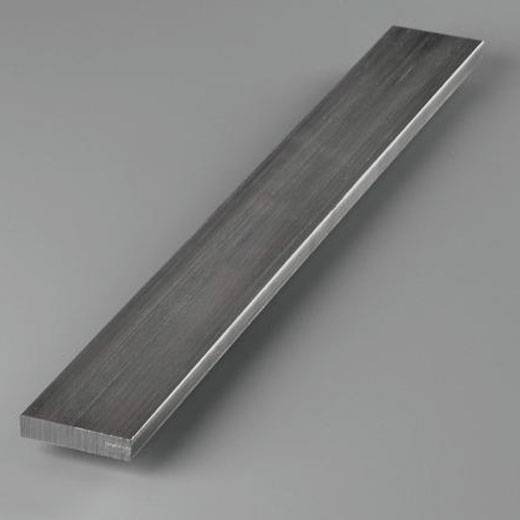When you’re tackling a new construction, fabrication, or manufacturing project, one of the crucial elements to consider is the choice of raw materials. Among the many components available, cold drawn flat bars are especially valued for their strength, precision, and surface finish. However, choosing the right cold drawn flat bars isn’t as simple as picking a size and material. It requires a deeper understanding of your project’s requirements, the properties of the material, and the right supplier.
In this article, we’ll walk you through everything you need to know to make an informed decision when selecting cold drawn flat bars. Whether you’re an engineer, fabricator, or procurement professional, this guide will help you ensure your project is on solid ground.
What Are Cold Drawn Flat Bars?
Before diving into selection criteria, it’s important to understand what Cold Drawn Flat Bars actually are.
Cold drawn flat bars are rectangular metal bars that are produced through a cold drawing process. This method involves pulling the metal through a die without applying heat, which increases the tensile strength, improves the surface finish, and allows for tighter dimensional tolerances.
Key Benefits of Cold Drawn Flat Bars
- Improved Mechanical Properties – Cold drawing enhances yield and tensile strength.
- Superior Surface Finish – Smooth and aesthetically pleasing, ideal for visible parts.
- Precision and Consistency – Consistent dimensions for high-precision applications.
- Better Machinability – Easier to cut, weld, and machine.
These qualities make cold drawn flat bars a preferred choice in a range of industries, including automotive, construction, aerospace, general engineering, and furniture manufacturing.
Understand Your Project Requirements
Choosing the right cold drawn flat bars starts with a deep understanding of your project’s specific needs. Here are key aspects to consider:
1. Load and Stress Requirements
Will your project be subject to heavy loads, vibrations, or mechanical stress? If so, you need flat bars with higher tensile strength and fatigue resistance.
2. Dimensional Tolerance
Projects that require high precision, such as automotive or aerospace components, demand tight dimensional tolerances. Cold drawn bars are excellent for this, but you’ll need to confirm with your Cold Drawn Flat Bars Stockist that the tolerances meet your standards.
3. Surface Finish
If the bars will be visible or part of a final product’s aesthetics, choose bars with a superior finish. Cold drawing naturally provides a smoother surface, but different grades and processes can affect the result.
4. Corrosion Resistance
Will the flat bars be used in an outdoor or corrosive environment? Materials like stainless steel offer better resistance to rust and corrosion than carbon steel.
Select the Right Material Grade
The choice of material plays a major role in the performance of cold drawn flat bars. Below are the most common material grades used:
Carbon Steel
- Widely used for structural applications
- Offers good strength and is cost-effective
- Less corrosion-resistant
Alloy Steel
- Enhanced strength and toughness
- Suitable for high-stress or high-wear applications
Stainless Steel
- Excellent corrosion resistance
- Ideal for food-grade, chemical, or marine environments
- More expensive but highly durable
Tool Steel
- High hardness and resistance to abrasion
- Best for cutting tools or machinery parts
Talk to your Cold Drawn Flat Bars Stockist to determine which grade is best suited for your project environment and functional needs.
Why Choose a Reputable Cold Drawn Flat Bars Stockist?
Your supplier plays a key role in ensuring you get high-quality, consistent products. Here’s why partnering with a reputed Cold Drawn Flat Bars Stockist makes a difference:
1. Consistent Inventory
Reputable stockists maintain a wide range of sizes and grades to ensure timely delivery.
2. Technical Expertise
They can offer technical support to help you choose the right grade, size, and finish.
3. Customization Services
Many stockists offer value-added services like cutting, polishing, and coating to suit your requirements.
4. Competitive Pricing
With strong supplier relationships, top stockists can offer competitive prices without compromising quality.
5. Timely Delivery
Delays can derail your project. A trusted stockist ensures on-time delivery, keeping your project on schedule.
Tips for Working with a Cold Drawn Flat Bars Stockist
Here are a few best practices when sourcing from a stockist:
- Always request a material test certificate
- Verify the origin and processing history
- Ask about lead times and availability
- Discuss options for bulk orders or recurring deliveries
- Review their return and replacement policy
These tips can help you build a strong relationship with your supplier and ensure long-term success for your projects.
Common Applications of Cold Drawn Flat Bars
To better understand where and how cold drawn flat bars are used, here are some common applications:
- Construction frames and supports
- Machine parts and tool fabrication
- Furniture components
- Automotive chassis and suspension parts
- Agricultural equipment
- Architectural finishes
Each of these applications requires specific mechanical and aesthetic properties, making the selection process crucial.
Final Thoughts
Choosing the right cold drawn flat bars is about more than just picking a material off the shelf. It’s about aligning the product’s technical capabilities with your project’s unique needs, environment, and budget.
Partnering with a trusted Cold Drawn Flat Bars Stockist ensures that you get reliable, high-quality material with expert guidance. From selecting the right grade and dimensions to ensuring on-time delivery, the right supplier can be a game-changer.
